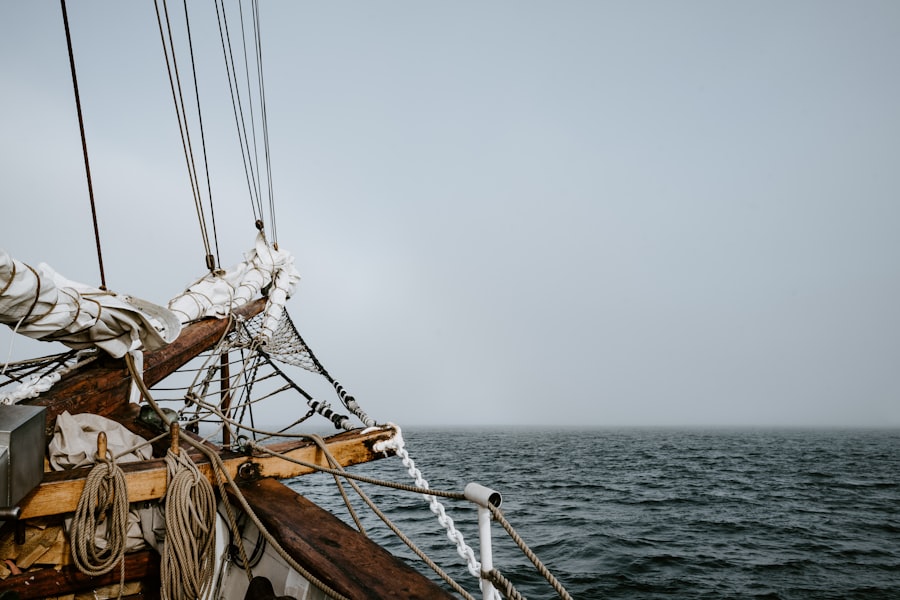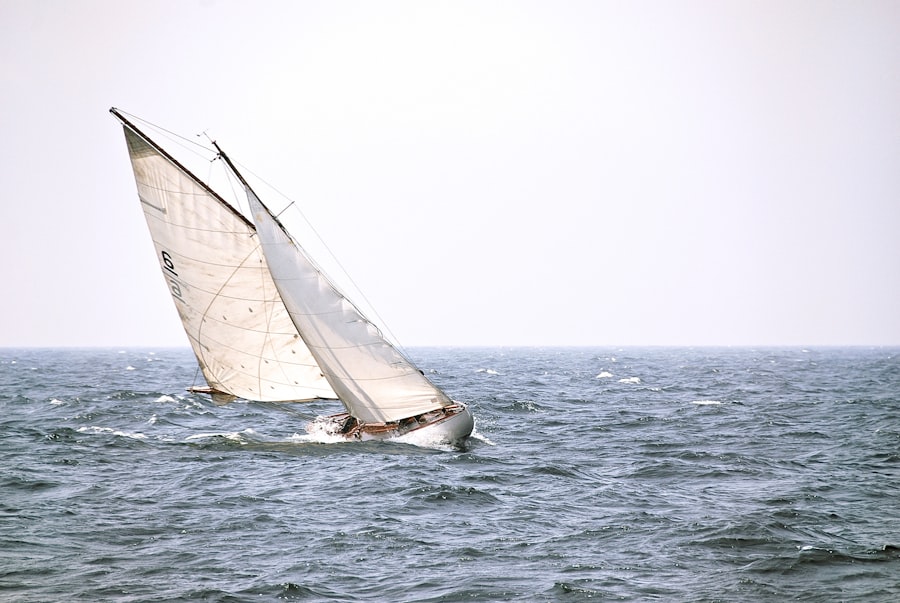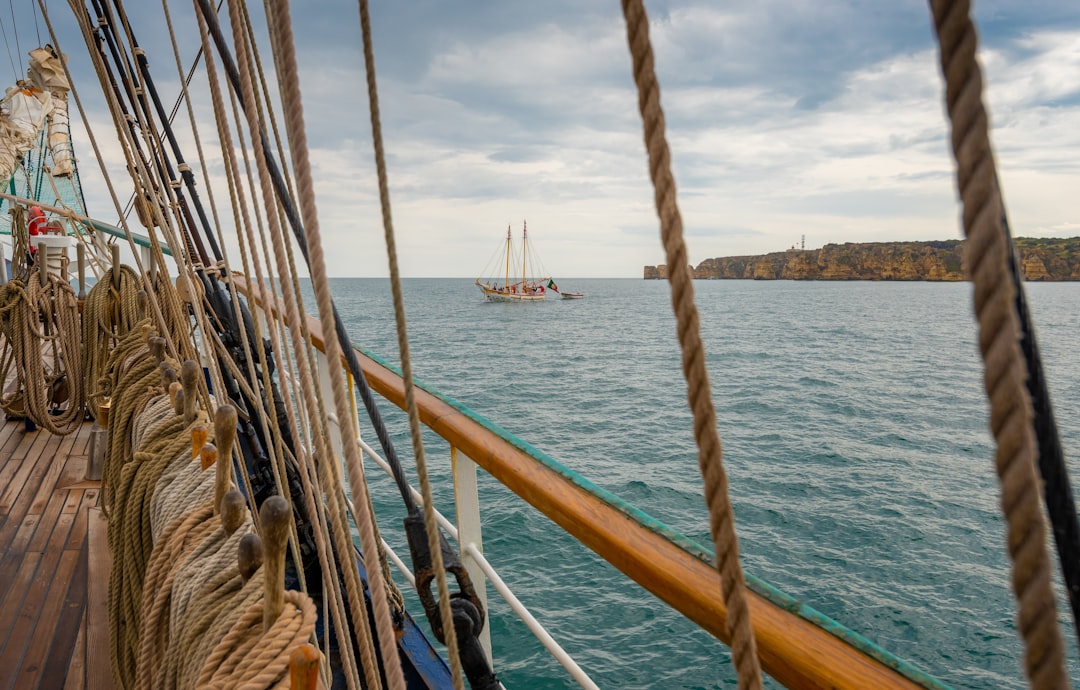The Drake Passage, a body of water that separates South America from Antarctica, is renowned for its tumultuous seas and breathtaking vistas.
Stretching approximately 600 kilometers (about 370 miles) between Cape Horn and the Antarctic Peninsula, it serves as a critical conduit for vessels traveling to and from the southernmost continent.
Navigating the Drake Passage is a rite of passage for many who seek to explore the wonders of Antarctica. The waters are notorious for their unpredictable weather patterns and rough seas, which can transform a serene journey into a harrowing experience in a matter of moments.
Despite these challenges, the allure of the passage remains strong, drawing travelers eager to witness the stunning landscapes and diverse wildlife that inhabit this remote region. As one of the last frontiers on Earth, the Drake Passage embodies both the beauty and peril of nature, making it a compelling destination for those with a spirit of adventure.
Key Takeaways
- The Drake Passage is a body of water between South America’s Cape Horn and the South Shetland Islands of Antarctica, known for its challenging sailing conditions.
- The weather in the Drake Passage is characterized by strong winds, rough seas, and rapidly changing conditions, making it one of the roughest stretches of water in the world.
- The peak sailing season in the Drake Passage is during the austral summer, from November to March, when the weather is relatively milder and the sea conditions are more favorable for sailing.
- The off-peak sailing season in the Drake Passage is during the austral winter, from April to October, when the weather is harsher and the sea conditions are more challenging for sailing.
- The Drake Passage is home to diverse wildlife, including whales, seals, and seabirds, as well as natural phenomena such as icebergs and stunning landscapes, making it a popular destination for wildlife enthusiasts and photographers.
Weather and Climate in the Drake Passage
The weather in the Drake Passage is notoriously volatile, characterized by rapid changes that can occur within hours. The region experiences a maritime climate influenced by the Southern Ocean, which means that temperatures tend to be relatively mild compared to other polar regions. However, this mildness comes with a caveat: strong winds and heavy precipitation are common, particularly during the winter months.
Sailors must be prepared for sudden storms and rough seas, as conditions can shift dramatically without warning. During the summer months, which span from November to March, temperatures in the Drake Passage can range from 0°C to 10°C (32°F to 50°F). While these temperatures may seem manageable, the wind chill factor can make it feel much colder.
The summer season also brings longer daylight hours, allowing for extended exploration and enjoyment of the stunning scenery. Conversely, winter months can see temperatures plummet, with icy conditions making navigation treacherous. Understanding the climate is crucial for anyone planning to sail through this formidable passage.
Peak Sailing Season in the Drake Passage

The peak sailing season in the Drake Passage typically occurs during the austral summer months, from late November to early March. This period is favored by many adventurers and cruise operators due to more favorable weather conditions and calmer seas. During these months, travelers can expect relatively stable weather patterns, making it easier to navigate the often-turbulent waters.
The longer days also provide ample opportunity for exploration and wildlife viewing, enhancing the overall experience for those embarking on this journey. During peak season, vessels are often filled with tourists eager to witness the breathtaking landscapes and unique wildlife that inhabit the region. The influx of visitors leads to a vibrant atmosphere on board, with opportunities for socializing and sharing experiences with fellow travelers.
Additionally, many tour operators offer special excursions during this time, including guided landings on Antarctic shores and opportunities for kayaking or ice climbing. For those seeking an unforgettable adventure in one of the world’s most remote locations, sailing during peak season offers an unparalleled experience.
Off-Peak Sailing Season in the Drake Passage
| Month | Average Temperature (°C) | Sea Ice Coverage (%) | Number of Tourists |
|---|---|---|---|
| March | -5 | 80 | 200 |
| April | -10 | 60 | 150 |
| May | -15 | 40 | 100 |
Sailing during the off-peak season in the Drake Passage presents a different set of challenges and rewards. This period typically spans from late March to early November when fewer vessels traverse these waters due to harsher weather conditions. While off-peak sailing may deter some travelers due to concerns about rough seas and unpredictable weather, it can also offer a more intimate experience for those willing to brave the elements.
Fewer tourists mean less crowded vessels and a greater chance to connect with nature in its rawest form. Travelers who choose to sail during this time may encounter unique opportunities for wildlife sightings that are less common during peak season. For instance, certain species of seals and seabirds may be more active as they prepare for breeding or migration.
Additionally, off-peak sailing can provide a chance to witness stunning ice formations that are often less visible during busier months. However, it is essential for sailors to be well-prepared for potential challenges, including rough seas and limited access to certain landing sites due to ice conditions.
Wildlife and Natural Phenomena in the Drake Passage
The Drake Passage is not only a vital maritime route but also a rich ecosystem teeming with diverse wildlife. The waters are home to various species of marine life, including whales, seals, and an array of seabirds. Among the most notable inhabitants are humpback whales, orcas, and minke whales, which can often be spotted breaching or feeding in these nutrient-rich waters.
The passage serves as a critical feeding ground for these magnificent creatures, making it a prime location for whale watching. In addition to marine mammals, the Drake Passage is also known for its spectacular natural phenomena. The convergence of cold Antarctic waters with warmer currents creates an environment rich in nutrients, leading to vibrant phytoplankton blooms that attract an abundance of marine life.
This phenomenon not only supports the local ecosystem but also provides opportunities for photographers and nature enthusiasts to capture stunning images of wildlife in their natural habitat. The interplay of light and water in this remote region creates breathtaking vistas that leave lasting impressions on all who venture here.
Considerations for Sailing the Drake Passage

Sailing through the Drake Passage requires careful planning and consideration due to its unpredictable nature. Travelers must be prepared for rapidly changing weather conditions and should equip themselves with appropriate gear to ensure comfort and safety during their journey. Layered clothing is essential, as temperatures can fluctuate significantly throughout the day.
Additionally, sturdy footwear is recommended for navigating wet or icy surfaces during land excursions. Safety is paramount when sailing in these waters. It is advisable for travelers to choose reputable tour operators with experience navigating the Drake Passage.
These operators typically have well-trained crews who are familiar with local conditions and can provide valuable insights into safe sailing practices. Furthermore, travelers should familiarize themselves with emergency procedures and protocols before embarking on their journey to ensure they are prepared for any unforeseen circumstances.
Best Time for Smooth Sailing in the Drake Passage
For those seeking smooth sailing conditions in the Drake Passage, late December through early February is generally considered the best time to embark on this adventure. During these months, weather patterns tend to stabilize, resulting in calmer seas and more predictable conditions. The likelihood of encountering severe storms decreases significantly during this period, making it an ideal time for those who may be apprehensive about rough waters.
Additionally, this timeframe coincides with peak wildlife activity as many species are more visible during their breeding seasons. Travelers can enjoy not only smoother sailing but also increased opportunities for wildlife sightings and photography. The combination of favorable weather and abundant wildlife makes this period particularly appealing for those looking to maximize their experience while navigating this iconic passage.
Best Time for Wildlife Viewing in the Drake Passage
The best time for wildlife viewing in the Drake Passage aligns closely with peak sailing season, particularly from late December through early February. During this period, many species are actively engaged in breeding behaviors or feeding in preparation for their young. Humpback whales are often seen breaching or feeding close to vessels, while seabirds such as albatrosses and petrels soar overhead in search of food.
Moreover, this timeframe allows travelers to witness unique interactions among various species as they thrive in their natural habitat. For instance, penguins can be seen nesting on ice floes or waddling along shorelines during their breeding season. The abundance of marine life during these months creates an unparalleled opportunity for nature enthusiasts and photographers alike to capture stunning images of wildlife in action.
Best Time for Photography in the Drake Passage
For photographers seeking to capture the breathtaking beauty of the Drake Passage, late spring through early summer—specifically from December to February—offers optimal conditions. The extended daylight hours provide ample opportunities for capturing stunning landscapes bathed in golden light during sunrise and sunset. The contrast between icy blue waters and dramatic mountain backdrops creates striking compositions that are sure to impress.
Additionally, this period coincides with peak wildlife activity, allowing photographers to document not only landscapes but also dynamic interactions among various species. Whether capturing a whale breaching against a backdrop of snow-capped mountains or penguins interacting on ice floes, photographers will find endless inspiration throughout their journey. The combination of favorable lighting conditions and abundant wildlife makes this timeframe ideal for anyone looking to create lasting memories through photography.
Best Time for Budget-Friendly Sailing in the Drake Passage
For travelers seeking budget-friendly options when sailing through the Drake Passage, considering off-peak months can yield significant savings. Late March through early November typically sees fewer tourists venturing into these waters, leading many tour operators to offer discounted rates during this time. While weather conditions may be less predictable, those willing to embrace adventure can find excellent deals on cruises and excursions.
Additionally, traveling during off-peak months allows budget-conscious adventurers to enjoy a more intimate experience with fewer crowds competing for space on vessels or at landing sites. This can enhance overall enjoyment as travelers have more opportunities to connect with nature without feeling rushed or overwhelmed by large groups. For those willing to brave potential challenges in exchange for cost savings, off-peak sailing presents an attractive option.
Choosing the Best Time to Sail the Drake Passage
Choosing the best time to sail through the Drake Passage ultimately depends on individual preferences and priorities. For those seeking smooth sailing conditions and abundant wildlife sightings, peak season from late December through early February offers an unparalleled experience filled with adventure and discovery. Conversely, budget-conscious travelers may find off-peak months more appealing despite potential challenges posed by unpredictable weather.
Regardless of when one chooses to embark on this journey, sailing through the Drake Passage promises breathtaking landscapes and unforgettable encounters with nature’s wonders. With careful planning and consideration of personal preferences regarding weather conditions, wildlife viewing opportunities, photography potential, and budget constraints, adventurers can select a timeframe that aligns perfectly with their aspirations for exploration in this remarkable region of our planet.
If you’re planning a voyage through the infamous Drake Passage, timing is everything to ensure a smoother sailing experience. The best time to sail this challenging stretch of water is typically during the Southern Hemisphere’s summer months, from November to March, when the weather is relatively milder and the seas are calmer. For more insights on navigating this treacherous route and to learn about the experiences of seasoned sailors, you might find this related article helpful. It offers valuable tips and firsthand accounts that can help you prepare for the journey ahead.
WATCH NOW! Drake Passage: Earth’s Deadliest Waters Revealed
FAQs
What is the best time to sail the Drake Passage?
The best time to sail the Drake Passage is during the austral summer, which runs from November to March. This is when the weather is milder and the seas are generally calmer, making for a more comfortable crossing.
Why is the austral summer the best time to sail the Drake Passage?
During the austral summer, the weather in the Drake Passage is relatively milder, with less severe storms and lower wind speeds. This makes for a more pleasant and safer sailing experience.
Are there any specific months within the austral summer that are better for sailing the Drake Passage?
While the entire austral summer is generally a good time to sail the Drake Passage, the months of December and January are often considered the best. During these months, the weather is typically at its most stable, with calmer seas and longer daylight hours.
What are the weather conditions like in the Drake Passage during the austral summer?
During the austral summer, the weather in the Drake Passage is characterized by milder temperatures, reduced storm activity, and calmer seas. However, it’s important to note that the weather in this region can still be unpredictable, so it’s always best to be prepared for a range of conditions.
Are there any factors to consider when planning a sailing trip through the Drake Passage?
When planning a sailing trip through the Drake Passage, it’s important to consider factors such as the specific itinerary, the experience and expertise of the crew, and the type of vessel being used. It’s also important to be prepared for the potential for rough seas and changing weather conditions, regardless of the time of year.
